
We ended last time with a plan that, primarily, involved researching Ranching and printing a rancher. This was…not well thought out.

Ranching would require unlocking advanced research and also getting a researcher who could get the advanced research skill. This would add an extra two dupes when we barely have the oxygen production for the ones we already have. Nevertheless, we still find a good rancher in the pod and take him, because we need dupes so we can research the techs for the rest of the plan.

The plan has been slightly modified since we left off, but it boils down to this:
- Research Air Systems, Ventilation, and Pressure Management
- Create an enclosed room using the airlocks from Pressure Management
- Put some rust deoxidizers and air pumps in the room, and use mechanical filters to separate the chlorine and oxygen.
Two rust deoxidizers produces enough oxygen for about 11 dupes, assuming full flow. This would require 3 air pumps and the filter situation would be tricky since each pump would need its own filter, otherwise pumps might back up (although with 3 pumps up against 1.2kg/s of gases, some slight backups might be fine). That’s the ideal system; for now we just need something that works.
We also need to take a look at what resources will be available for this plan. We need rust, and salt. Rust we have in abundance in two nearby rust biomes: one at the top of the base, and one at the bottom, below our water tank.
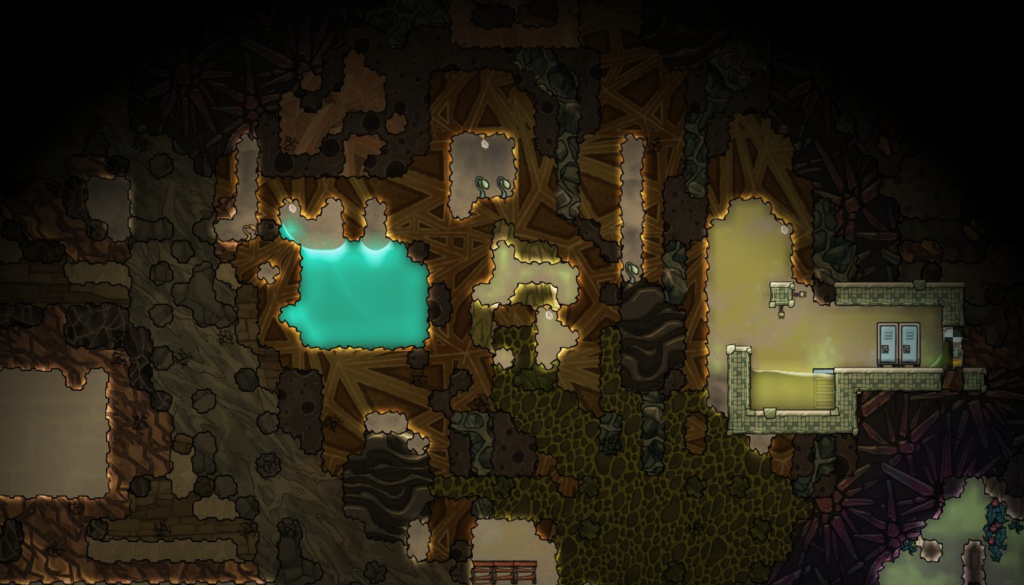
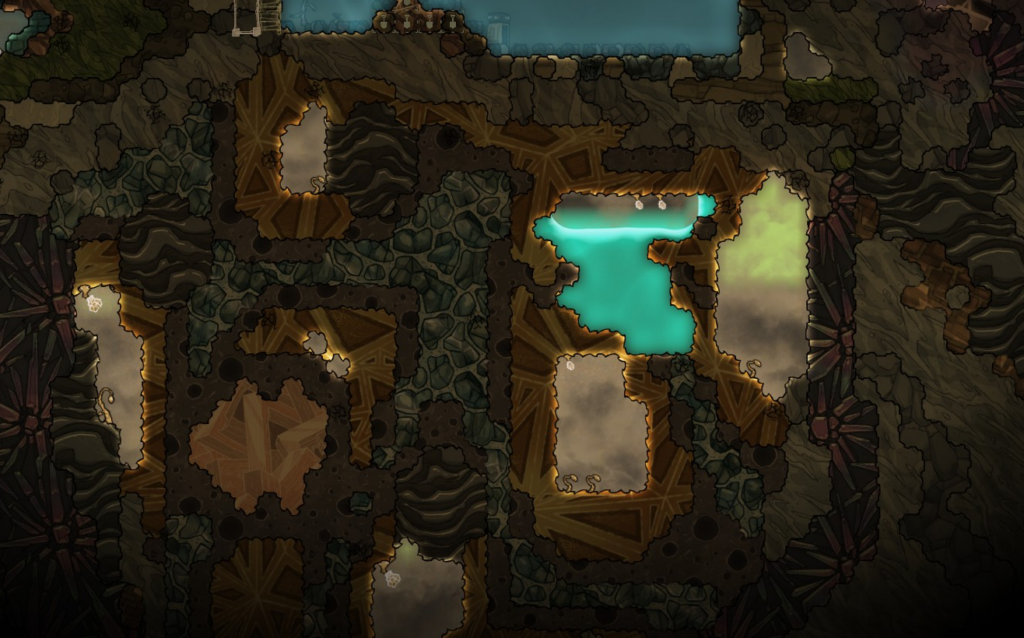
Both also have decent salt deposits, with the one at the bottom a bit more accessible. Those ethanol pools might be in the way so we should do something about that too. The obsidian boulders currently pose a problem as we can’t mine them yet.
We start by digging out the top patch, bringing our main ladder up there and digging across so we can stick a pump in the pool. Once this is taken care of we can core out the rest of the area for all that sweet, sweet rust.
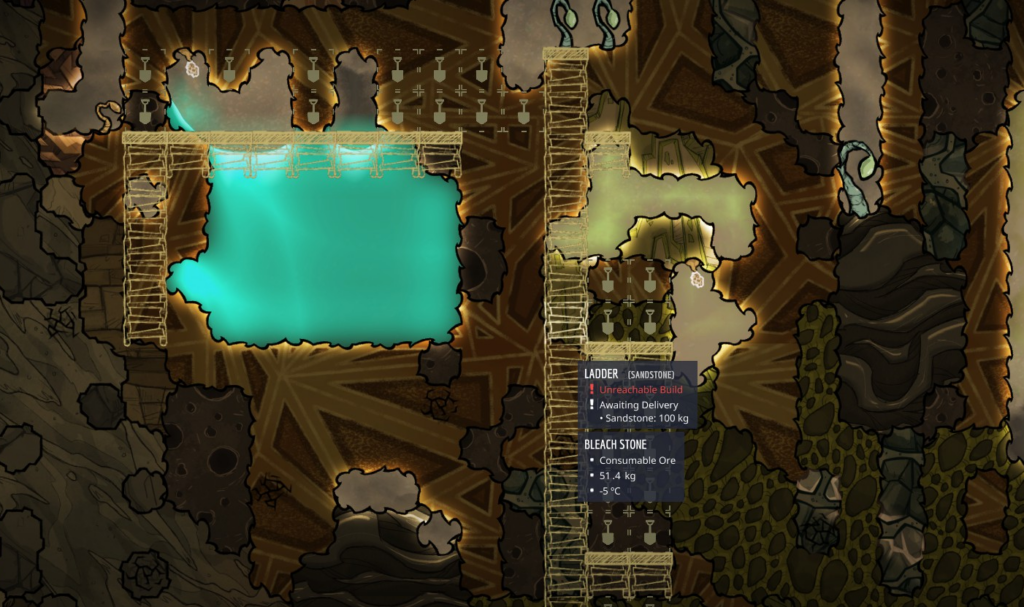
The bleach stone will cause a little problem, offgassing chlorine, but the nearby wild planted dasha saltvine should absorb some of the emitted chlorine, at least until we take the bleach stone for storage underwater where it can’t emit gas.

While that’s ongoing, we also plan out new bedrooms, as we plan to print quite a few dupes in the near term (once oxygen is sorted).

To get to the lower patch we need to go past our current water tank, so we plan that for expansion and make room for the downward ladders. Below that, we plan for an ethanol tank.
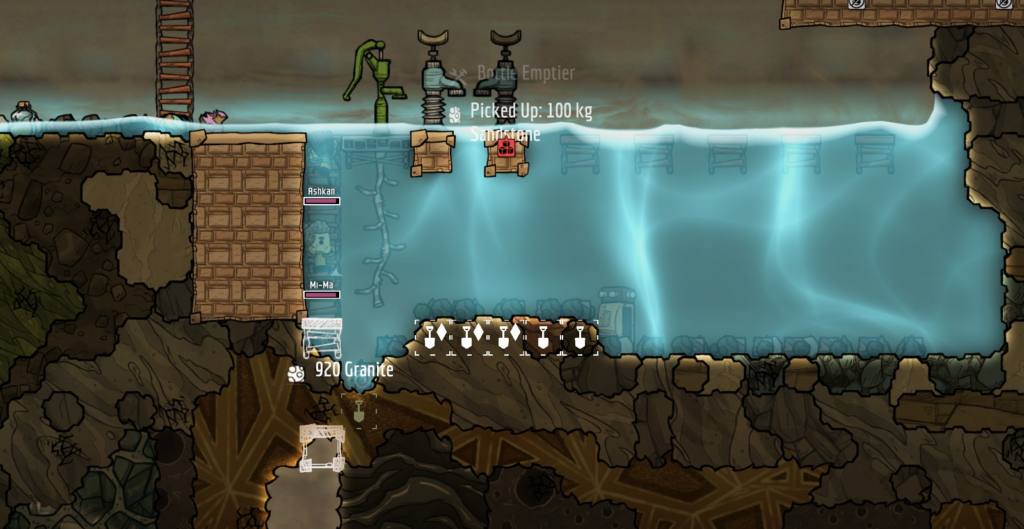
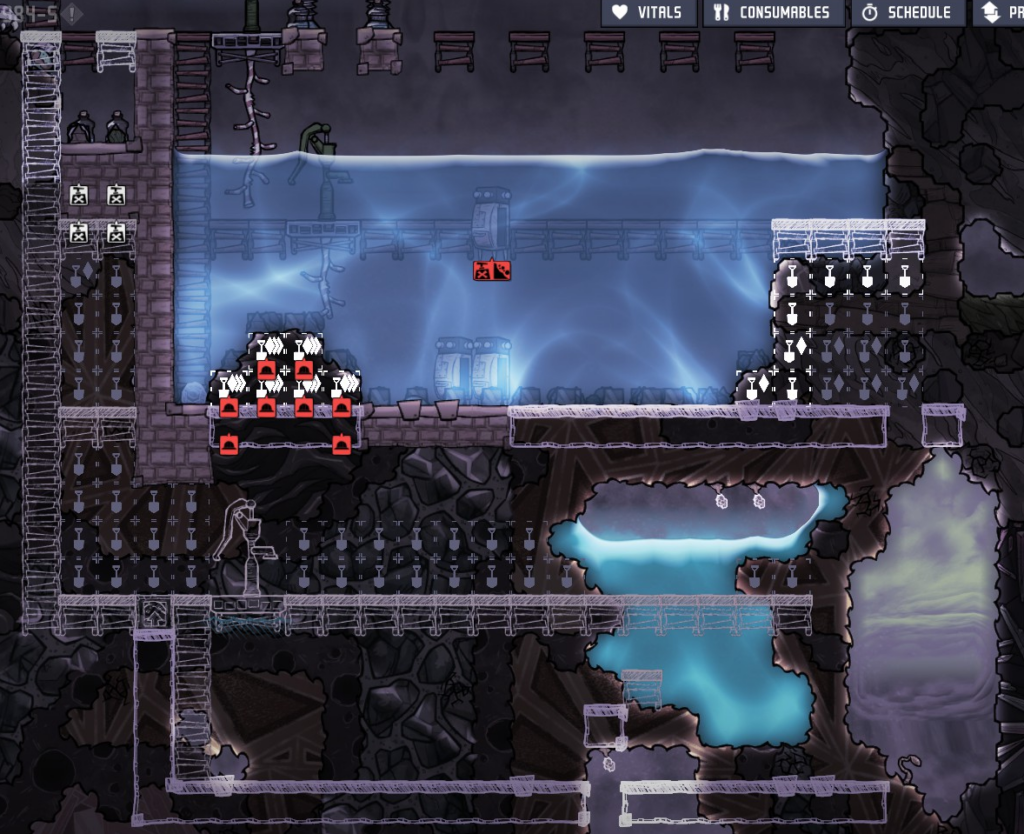
Since we took that rancher earlier, we can also now research another tech, this one providing the all-important rust deoxidizer (and eventually the electrolyzer).

We also need to set up a second schedule since we only have 3 bathrooms for now.

Our temporary mealwood, near the hot oil biome, is starting to overheat, so we also expedite construction on the new central farming area. Moving the bedrooms also frees up some temperate area for future planting.


We also finally have some relatively nice bedrooms and bathrooms for everyone. Only +2 morale for now, but it’s something.

And our second skill points are starting to come in, meaning we can now mine abyssalite (but still not obsidian).

Until we get the rust factory running, we can’t really afford more dupes, and the oxyfern will both provide oxygen and remove some carbon dioxide, so this is a win-win.
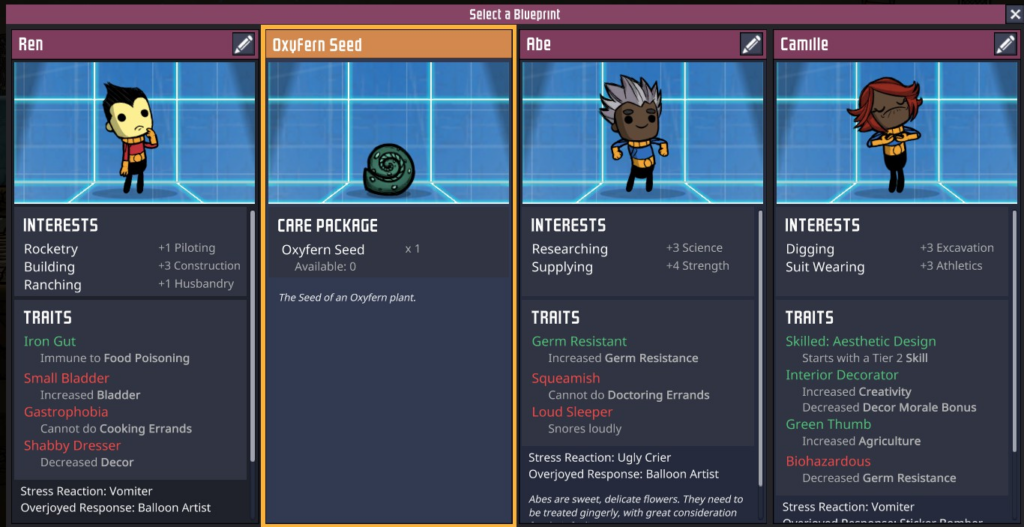
And taking another look at priorities, since Ari won’t be able to do any ranching for a long time, we get him running on the wheel to make sure our current facilities stay powered. He’ll also do some cleaning up in his spare time.
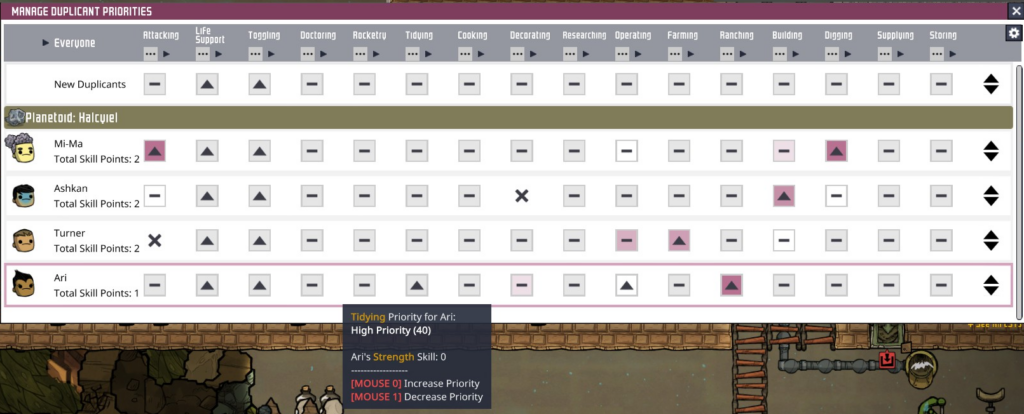
Looking back to the top of the map, we have also revealed another biome, this one very, very, cold: space! (Color profiles are from the very nice Temperature Thresholds mod).
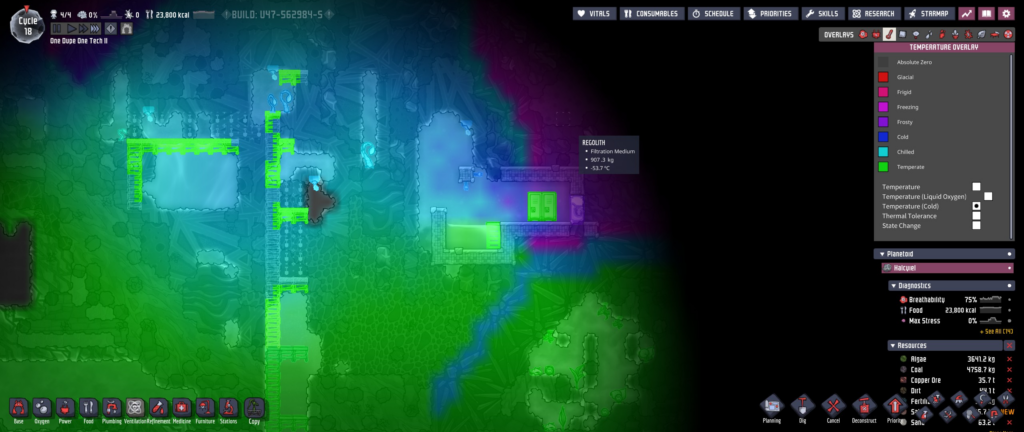
With nothing exciting on the available dupe front, we take another oxyfern seed and a fungal spore.
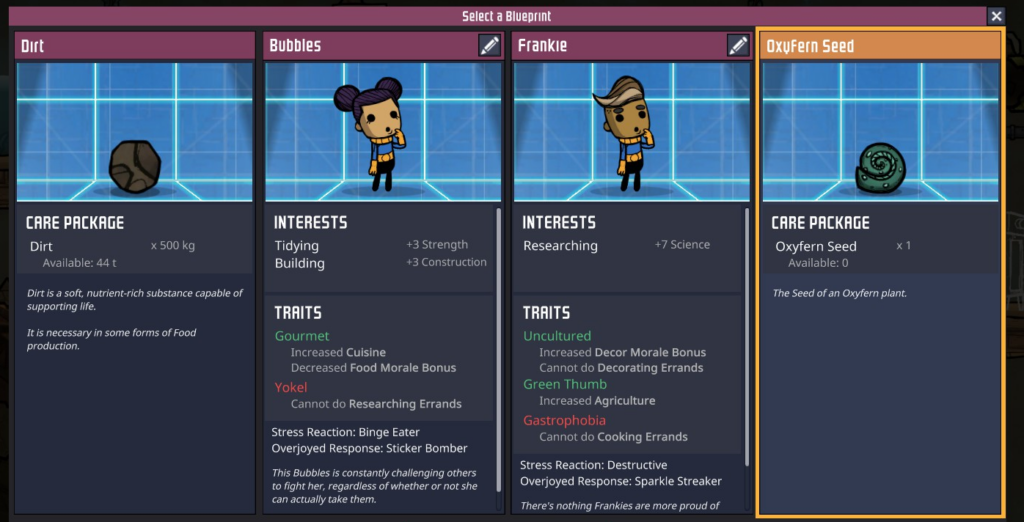

So of course we also begin planning out a spot for mushroom growing, creating a trough to capture some carbon dioxide to provide an environment for them to grow in.

With our meal lice starting to grow in bulk, we take muckroot off the menu, since it will never spoil, reserving it for emergencies.

The topside ethanol pump is finally up and running. This should also hopefully chill the base a bit on its way through. I will later extend this pipe to run through the mealwood farm to provide some additional insulation from the heat.

Wasn’t this episode supposed to be about exploration? Let’s get back to that. First up: a drecko biome with no dreckos.
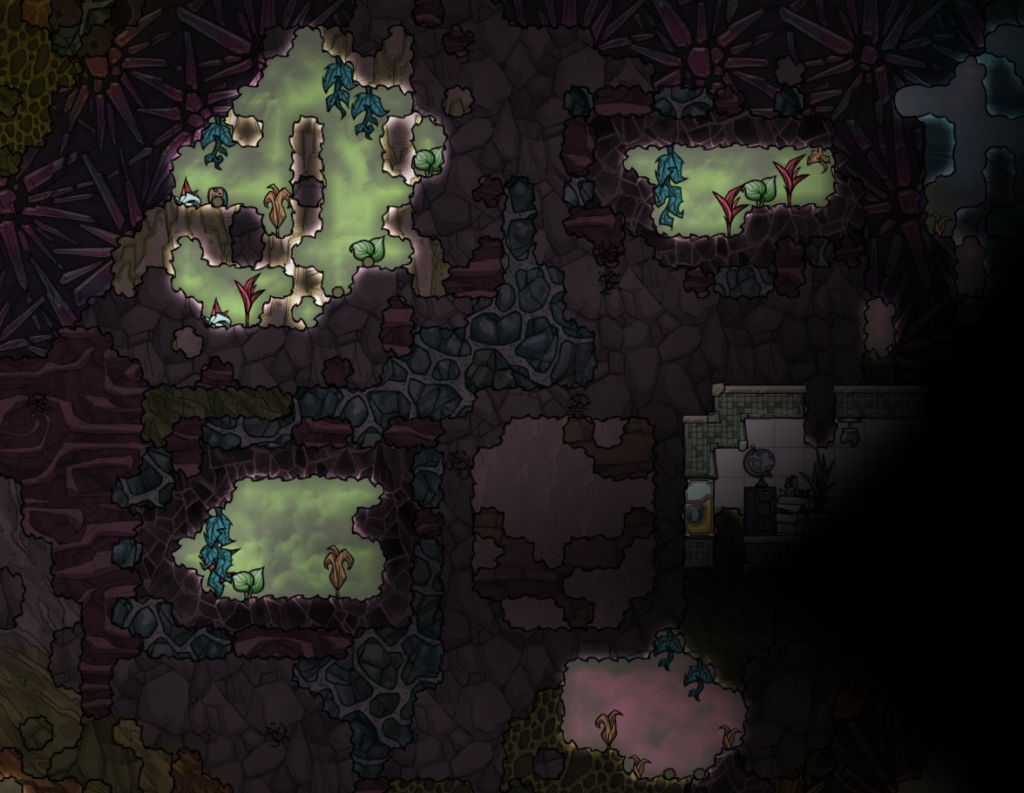
Another abyssalite break is letting some space cold in near the top.
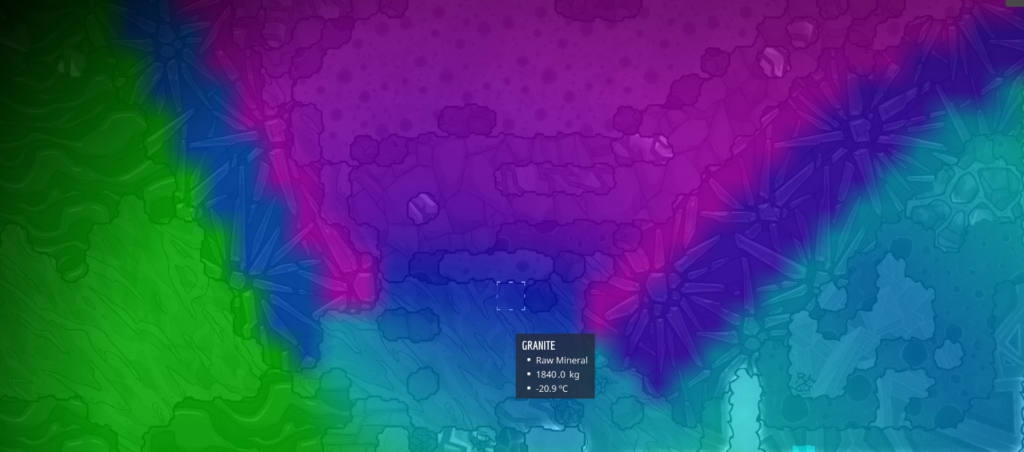
As well as this one near where we first spotted space, cold enough to liquefy chlorine.

And far in the upper left, we see our first icy biome, which has unfortunately already been mostly melted by the adjacent oil biome.

Finally, we spot the mysterious hermit’s storage container, but without a gas range we won’t be able to complete recruitment (and probably can’t meet the decor requirements either). We’ll leave him alone for now.

At last we get a dupe with one of the interests we were looking for: cooking. We start planning out a kitchen and food storage near where we want our mess hall / great hall.


With another dupe we can start another tech. Just one more after this until we can get our new rust-oxygen setup going.

And our third skill points come in, finally letting us get past the obsidian boulders.

We also want to dig into this carbon dioxide pocket to fill the food storage with inert gas.

The kitchen and mess hall get completed and we now have sterile food storage (which is unfortunately still too hot) and a place to eat. We’re several techs short of having what we need for a great hall, but the +3 morale from a mess hall is good for now.
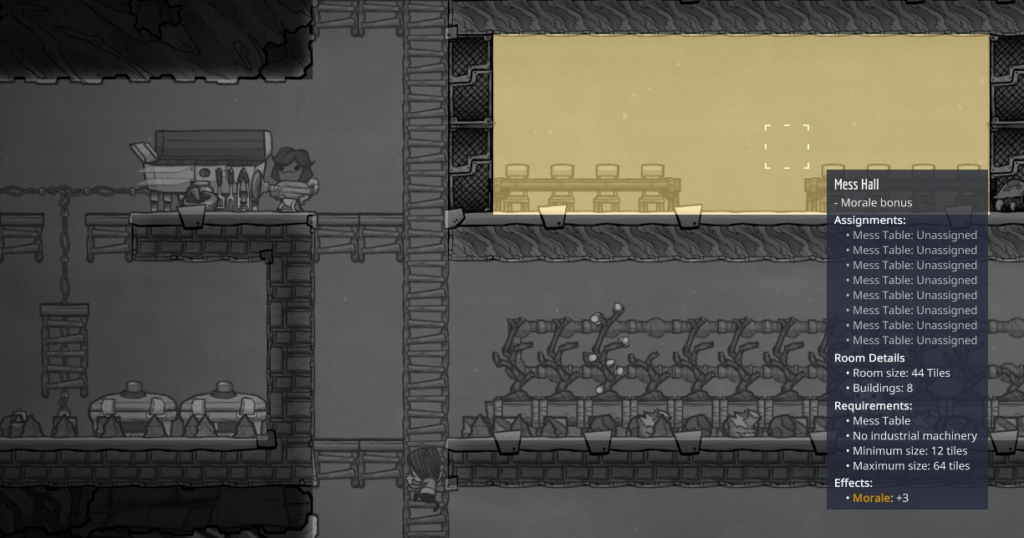
Meanwhile, in the printing pod…

With no way to move critters around, we do some preparations to keep this guy around the printing pod. He’ll come in handy later when it’s time to set up nature reserves.

Since we’re one tech away from being able to start on our mid-term oxygen production, I grab the first dupe that looks remotely useful.


We’ve got enough mealwood planted for about 13 dupes, so we start canning it up so it will last longer, and we’re also just letting some of it sit on the vine where it won’t spoil, at least until we can catch up on cooking and storage. In our CO2 pit, pickled meal lasts about 50 cycles.

At last the research is done and we can start on our oxygen production, but this post is already pretty long, so that’s for next time! A quick preview of what’s to come:



